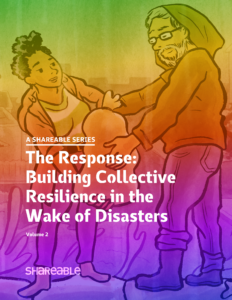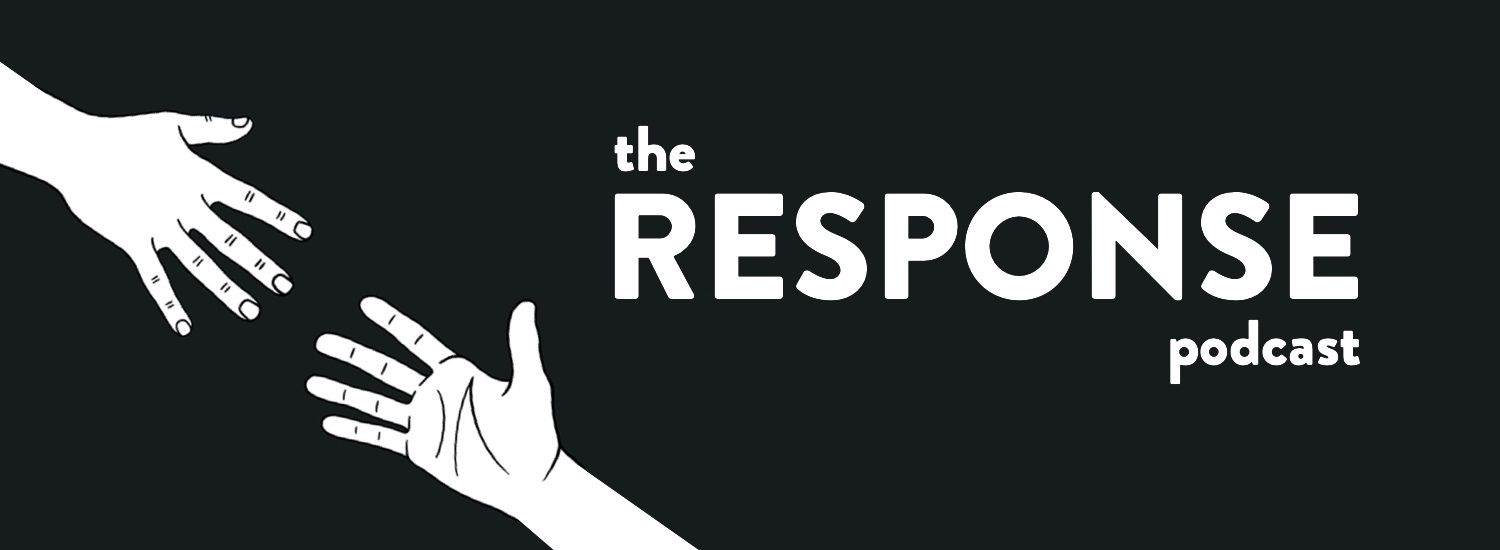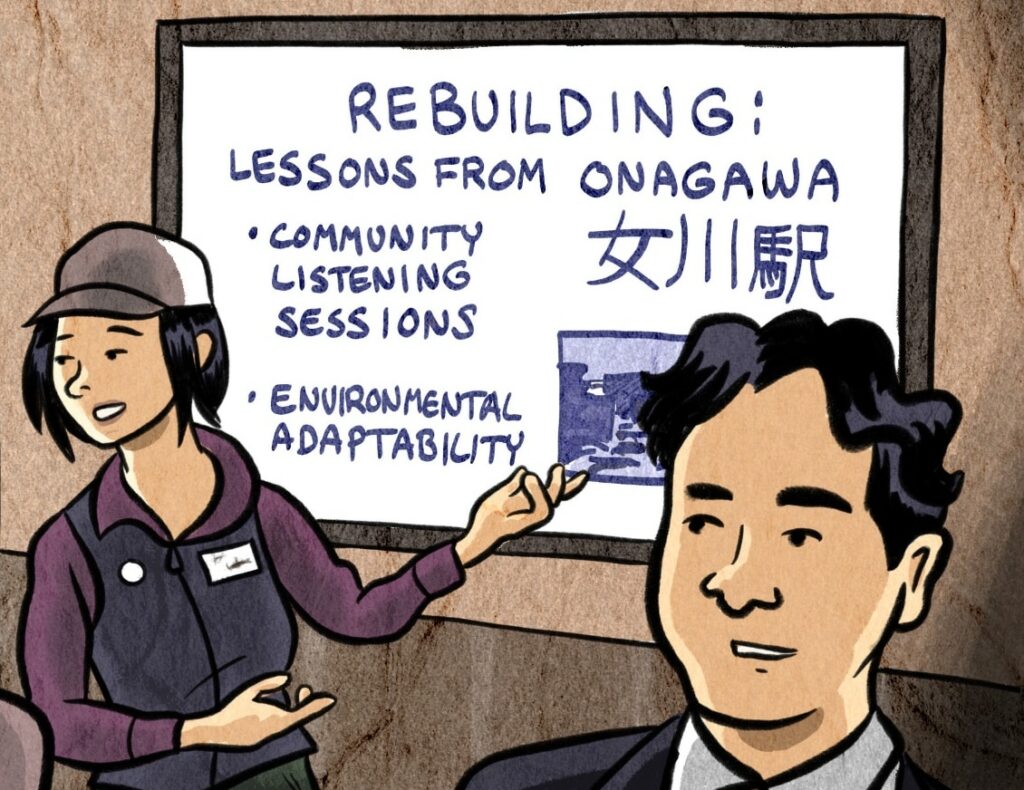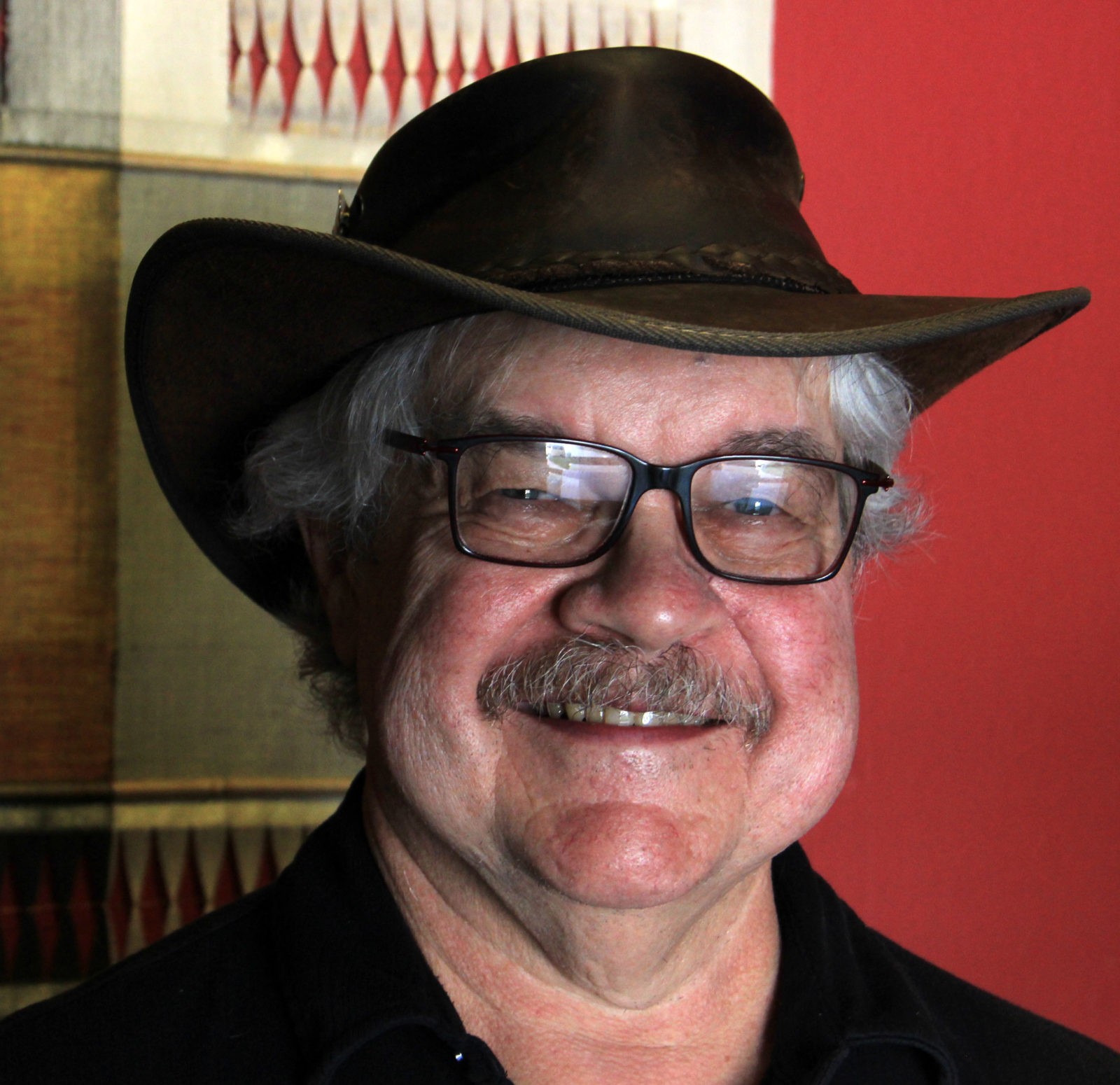Editor’s note: Bob Stilger shared his experience in Japan after the triple disaster of 2011 for a live audience during Transition US‘s Regenerative Communities Summit. A slightly edited transcript of his presentation is available below and you can also listen to him tell the story himself on The Response podcast. Bob is the founder of NewStories and author of the book, “AfterNow: When We Cannot See the Future, Where Do We Begin?”
It’s delightful to be here with all of you. We started New Stories in 2000, started it right after the — all of the work around Y2K when it was clear to some of us that what was really going on was we needed a new story — that the old story was broken. We needed some new ways of making sense and finding meaning in our lives. And New Stories was created to work with people and communities that wanted to discover those new stories. You know, I never expected to be a disaster guy. Furthest thing from my mind. But what we’ve noticed at New Stories more and more is the space that is created for new stories when disasters happen.
Now I want to share two stories — not too surprising. The first comes in Japan just about two weeks after the disasters. I wasn’t there at the time, but I was there very shortly after. And we’d been planning a meeting of people from businesses in Tokyo who knew that they needed innovation, and we were introducing a model around future centers. We almost canceled it. The air in Japan was so heavy. But then we said, actually, it’s probably more important now than it ever was to have this gathering. And because it’s Japan. You know, people arrived because they said they’d be there. They came in like they were walking through molasses. No one wanted to be there. No one had talked with anyone about what had happened with themselves with their family — anyone else. But they were there. And so we started with this just really tight atmosphere.
Three hours later, the room was Waikuku, which in Japanese means just filled with excitement. And I’m going, what the hell? This is so different than three hours ago. What’s happened here? And that sensation was so strong that I actually had to step out to the edge of the room and quiet myself to try and sense into what’s going on. And I heard this really loud voice say we have been released from a future we did not want. That was the deepest energetic impact of the disaster. Of course, there was the trauma. Of course, there was the loss, but there was this deep, energetic sense of, I don’t have to do the same shit in the same way that I’ve been doing it my whole life. Something else is possible and that we begin to create that when we come together.
Fast forward. Well, actually, stay right there. Stay right on March 11, 2011. A 9.5 [magnitude] earthquake followed by a tsunami traveling at 50 miles an hour with water more than 50 feet high in many places, slams into the Japanese coast. The next day, the reactors explode. This beautiful fishing village of Onagawa — just drop-dead gorgeous — had the perfect conditions to be totally destroyed. Ten thousand people lost their homes that day. Many lost their lives. The mayor of Onagawa. Like all the other mayors in northeast Japan was over 70. He was a little bit wiser than a lot of them. As he looked out and he said, this is not for me to lead. We need younger leadership.
And he went out and he recruited Suda San, who was a local boy in the national legislature in his late 30s, and asked Suda San if who would run for mayor. Suda San thought about it and eventually said yes. He ran, he was elected in November, six months after the disasters. He came in and he looked at all of the plans that the outside professional planners had come in immediately to create — because this was like one of the biggest points of devastation, visible devastation in Japan. And he looked at him and something didn’t seem quite right to him. So he thought about it for a while, and he went back to the old mayor and said, Mayor, tell me, frankly, what do you think of these plans? And the mayor was very quiet and then eventually he said, frankly, I have some misgivings. Hmm. So he goes out and he talks to other people and says, tell me, frankly, what do you think of these plans? Same response. I have some misgivings.
The plans were basically an adaptation for what Onagawa had been before. So the mayor says, you know, I hate those big town hall meetings because all that happens is people come and yell at each other and they just want to be mad and angry and nothing really happens. So he said, I’m going to just start talking to people. And so he goes around to all of the different emergency housing settlements — Japan within four months and created housing for 300,000 people. And he listens to people. He asks them: what’s important to you? What do you really cherish as we create the city? And gets them talking with each other, and he listens. Beauty and safety are the two key values that come out of those conversations.
So they start talking about what would we do? If we let go of all the constraints to build a community that had beauty and safety as its key organizing principles, I won’t go into the whole story. But they did some radical things. They said, OK, we want to have the safest residential housing in coastal Japan. And the only way to do that is if we go in and remove the tops of these lovely mountains that surround our harbor. Because that’s where we’re going to build our housing. The tsunami is never going to go there. And we’re going to take that dirt and we’re going to bring that down to the coastal level and we’re going to build a second zone that’s higher than tsunamis almost ever go. And that’s where we’re going to have the hospitals, that’s where we’re going to have the schools. That’s what we’re going to have the shopping street. And then we’ll have the coastal area for industrial, and we’ll interconnect all three of those areas with beautiful roadways and beautiful bikeways.
The community created that plan. I haven’t been to Onagawa for two years. I mean, hell, I haven’t been anywhere for two years, but two years ago, the last time I was there, those mountaintops were removed and the foundations were being laid for the residential housing. That second area had been created. And one of the most beautiful shopping streets in Japan was already working in Onagawa. That community had started to come together again. But two years ago, two years ago, was eight years after the disaster. The miracle of that temporary housing was indeed a miracle, but temporary housing is not, you know, it’s kind of like trailers. Trailers that weren’t designed to last for eight years. But the people in Onagawa have lived in those trailers for eight years without complaint because they knew the vision that they and their other members of the community were creating together. It was a collective vision. It was what they wanted, and they knew that their patience was required.
And that’s one of the questions. You know, I work really closely these days with people in Paradise, California, where it’s three years out from the Camp Fire of November 9, 2019 — it’s going to take a long time to create whatever is created there. The same is true in every disaster. They call on our patience, they call on our perseverance. They call on our connection with each other to build the communities that we want now. Thank you.
##
“Reimagining Onagawa” podcast credits:
- Host and executive producer: Tom Llewellyn
- Series producer: Robert Raymond
- Theme Music: “Meet you on the other side” by Cultivate Beats
- Original artwork: Kane Lynch
Listen and subscribe with the app of your choice, including:
The Response from Shareable.net, is an award-winning documentary and podcast series hosted by Tom Llewellyn exploring how communities are building collective resilience in the wake of disasters.
 |
Download our free ebook- The Response: Building Collective Resilience in the Wake of Disasters (2019) |














